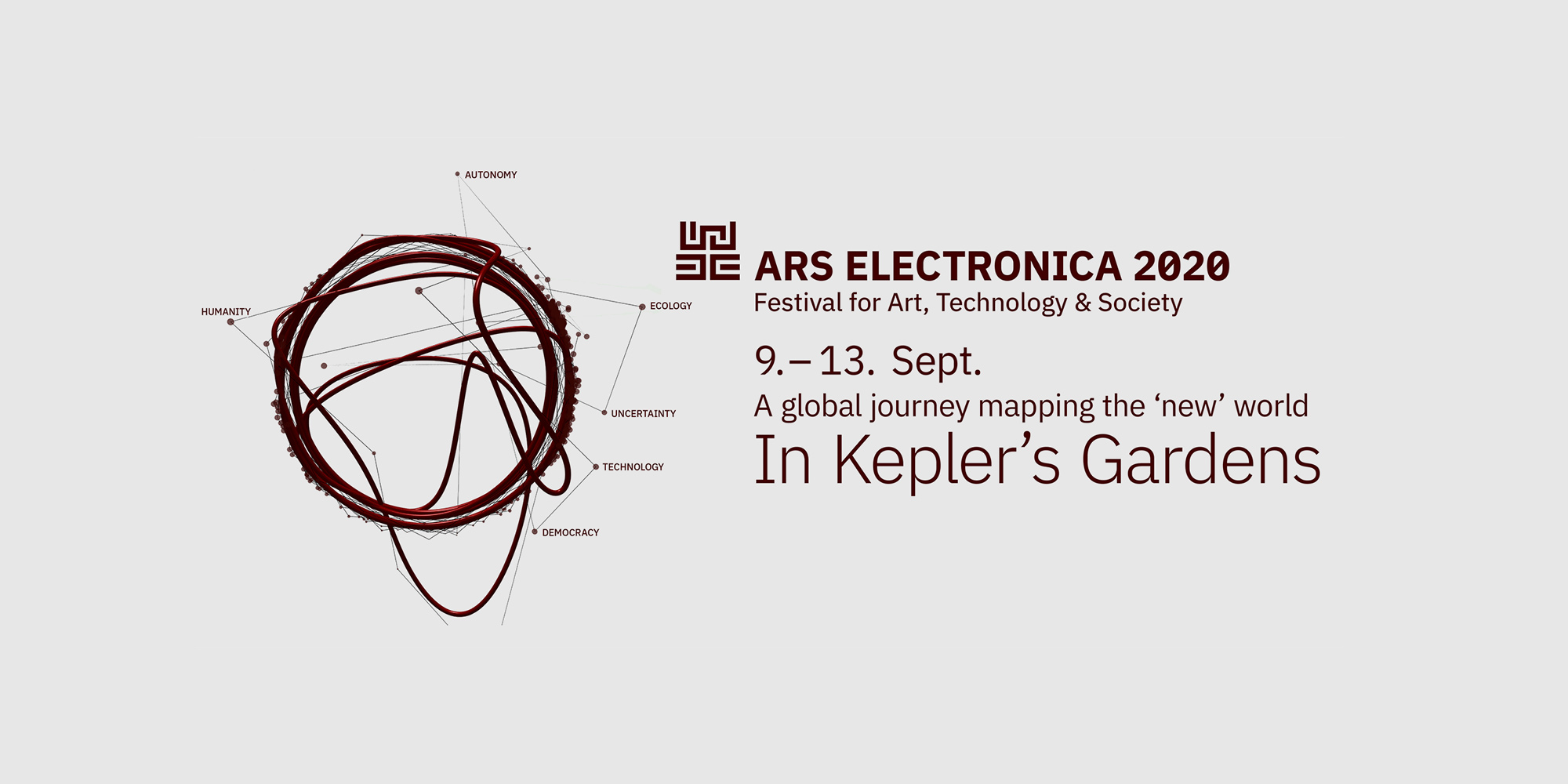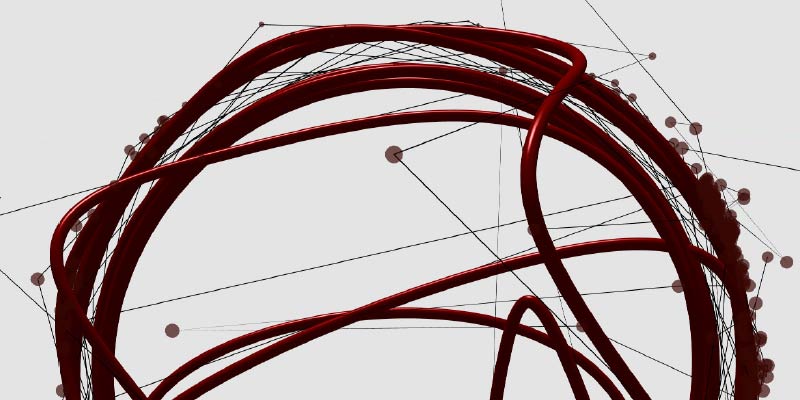Ars Electronica KEPLER’s GARDEN Linz
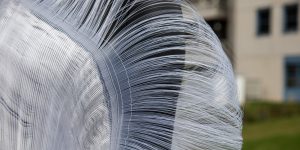
Marinero - Tailored by weather
Jef Montes (NL)
The focus of Marinero is to create an architectural blueprint that transforms organically over the course of time. The vision is to design a new kind of production system resulting in adaptive garments that grow with us individually. The weavings have a warp of monofilament and a weft of integrated variable threads. The combination of these threads causes friction and results in dynamic shapes during different meteorological conditions such as: rain, heavy wind or drought.
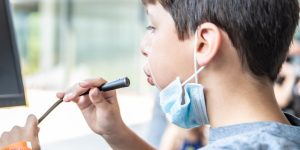
Air on Air
Yasuaki Kakehi (JP), Daisuke Akatsuka (JP), Juri Fujii (JP), Yoshimori Yoshikawa(JP), Joung Min Han (KR)
This work is an installation that connects distant places online. Bubble machines at the installation site then creates soap bubbles based on the breath data of online participants in real time. Through a web browser, they can see the bubbles floating in the air as if they are blowing in person at the venue. This work allows participants to feel the air in a remote location. And it also gives them a way to communicate to the remote location ”physically” in these times of restricted mobility.
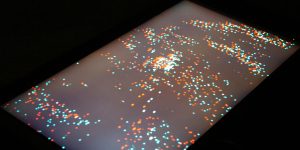
Kōrero Paki (Our stories of the legends)
Yinan Liu (NZ), Jermaine Leef (NZ), Uwe Rieger (DE/ NZ), Holly White (NZ)
Kōrero Paki takes key moments from the Maori mythology and transforms them into 3D holographic sculptures displayed on personal handheld devices. Using a simplified motion capture process, a performer transforms the drawings into animated narratives. Viewed with simple red/cyan cardboard glasses, these sculptures are perceived as hovering above the surface of a smartphone and appear to be dancing in the viewer’s hand.
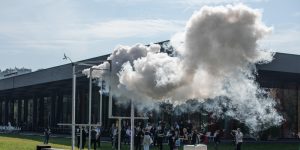
Ethereal Fleeting
Lukas Truniger (CH), Itamar Bergfreund (CH), Bruce Yoder (US)
Eine Serie von Wolken, erzeugt von einer maschinenähnlichen Skulptur, schwebt in ihrer Umgebung und löst sich langsam wieder in Luft auf. Dieses vermeintlich natürliche Phänomen zeigt sich in merkwürdig wiederholenden Mustern.
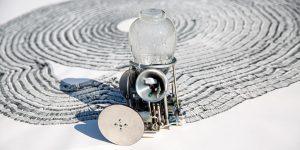
Machine in Flux - Wood
Sunjoo Lee (KR), Ko de Beer (NL)
A documentation and cartography of time and environment inspired by the growth mechanism of the tree’s annual rings. The machine sensitively responds to changes of light, wind, temperature, humidity and sound – and inscribes these influences using ink on paper.
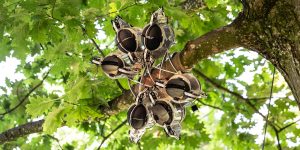
A Diverse Monoculture
Jip van Leeuwenstein (NL)
”A Diverse Monoculture” is a new family of artificial species, which together form a hive of new predators. These predators are used in an attempt to restore the balance within our ecosystem. The first robot predator in the family is the Dionea Mechanica Muscipula, a creature designed to attract and digest oak processionary moths. The Dionaea Mechanica Muscipula is developed to reduce the population of oak processionary moths, an increasing plague.
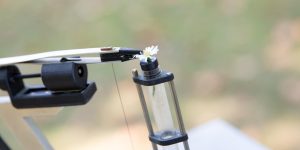
lovesmenot
Sebastian Wolf (DE)
lovesmenot is part of an ongoing series of automata exploring our relationship with machines and the absurdity of over-automation. In this work, a machine plucks the petals of a daisy one by one, looking for answers to a question that will never be revealed to the observer. It hereby imitates a typically human action, a rite of sorts that usually attains its meaning solely through the human element. The machine does not serve anyone but itself, the answers obtained are never revealed.
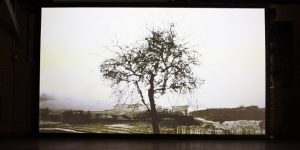
Still There
Marlene Reischl (AT)
"Still There" is a video installation dealing with irritation as a state. Manipulated through Frame Blending, the computer transforms the images it has been given to generate new intermediate ones by itself.
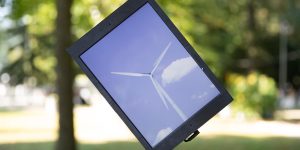
Derotation
Domas Schwarz (AT)
“Derotation” is an installation about a looping video of a windmill shown on a screen rotating at the same speed in the opposite direction. The movement of a wind wheel, known for generating electricity, is visually stopped and derotated by the motion of a motor, known for consuming energy. Two different aims lead to a standstill: another instance of power wastage in media art?
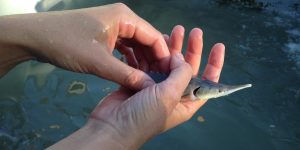
Zugzwang - The Compulsion to Find a Common Baseline in Sound
Christina Gruber (AT), Samuel Hertz (US)
Zugzwang explores how a non-human centered approach to the use of technology can help us tune in to our companion species & environments. Though sound is omnipresent, we have problems understanding. Miscommunication and distortion happen constantly. Can listening become a central asset in learning about our environment?
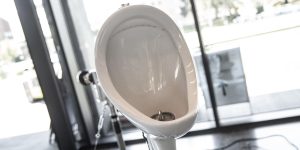
Elsa On The Moon
Mathieu Zurstrassen (BE)
Elsa on the Moon is a kinetic sculpture tribute to Elsa Von Freytag Loringhoven, eccentric baroness and contemporary of Marcel Duchamp; ambiguously attributed with the creation Fountain, in 1917. Or was it Louise Norton? The work consists of a robotic leg capped with a ceramic urinal. The device is balanced with counterweights through an extended aluminum arm.
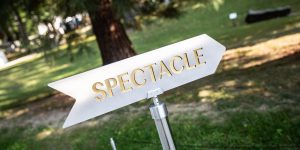
God is Dog spelled Backwards
Mathieu Zurstrassen (BE)
God is dog spelled backwards is a 360° kinetic artwork, and a tribute to Guy Debord’s La société du Spectacle, first published in 1967.
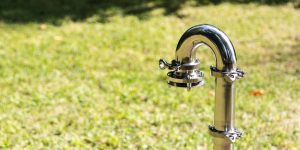
Above the Below
Mathieu Zurstrassen (BE)
_ /bəˈloʊ/ is an exterior sound installation, featuring a pipe emitting an audio file emerging from the ground. The audio file is a lecture from the book *How to Analyze People on Sight*, written in 1921 by Elsie Lincoln Benedict and Ralph Paine Benedict.
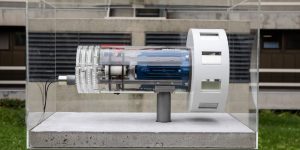
Political Atmosphere
Felix Lenz (AT)
“Political Atmosphere” is an experiential installation amplifying the invisible connections between flight turbulence, climate change and war. It consists of a data-driven mechanical siren and an ADS-B antenna, which allows for receiving, processing and visualizing the surrounding flight traffic. Each flight slowly accelerates the latent build-up of potential until a threshold is passed and a mechanism releases the siren.
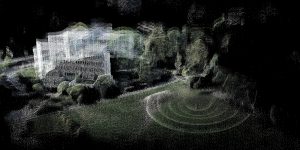
site-inflexion
Fulldome / VR & AR Lab
The immersive installation site-inflexion invites visitors to take part in a site-specific virtual and acoustic journey. The scenery and soundscapes of the JKU campus are the main actors in the work, alluding to Johannes Kepler's activity as a landscape mathematician. A laser-scanned topographic survey of Kepler’s gardens becomes an audio-visual environment transfigured by the everyday sounds that inhabit them. Oscillating between urban pollution and phantasmagoria, structures and lawns bend and curve under the effect of sound waves, reaching their inflection point by tipping towards the unknown.
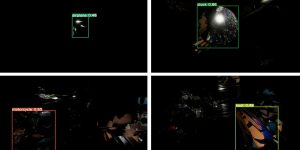
Cross Perception - work in progress
Fulldome / VR & AR Lab
A limitless space. Everything moves—light, shapes and colors. Human and machine let their sight wander and try to recognize something. The human beings search for orientation, the device calculates.
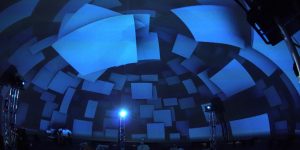
Future Room and Liminal Spaces (re-edited) 360˚ film screening
Fulldome / VR & AR Lab
The Fulldome Program of the Digital Arts Department at the University of Applied Arts Vienna presents experimental immersive works, collaborations between the Department and the University’s Science Visualization Lab, Trans-Media Academie Hellerau, and the transdisciplinary performance company, kondition pluriel. Future Room and Liminal Spaces (re-edited) reveal the artistic potential of the fulldome, as does the 360˚ film screening selection of works by researchers, teachers, and students.

BR41N.IO Hackathon - The Brain-Computer Interface Designers Hackathon
The BR41N.IO Hackathon brings together programmers, engineers, designers, artists and/or enthusiasts, who collaborate intensively as an interdisciplinary team. Each team must design and build a unique, playful and wearable headpiece that can measure useful EEG signals in real-time to create any sort of interaction. The hacking projects use EEG electrodes and amplifiers, and challenge programmers to code an interface that enables them to control devices, robots or applications, post messages on social media, make paintings, or enact a myriad of other applications only with their thoughts. BR41N.IO also challenges creative minds to design a BCI headset with 3D printers, handcrafted materials and sewing machines.
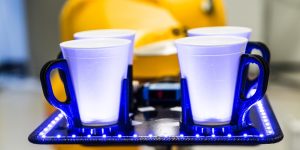
Robots in Action - fast and sensitive!
Institute of Robotics, Johannes Kepler University Linz (AT)
Robots can be strong and sensitive at the same time! They can move extremely fast but also handle fragile objects like champagne glasses. Imagine you want to carry a tray with several glasses of filled liquid without spilling –and you may even be adventurous and try to wave the tray over your head. Most of us will fail to perform such a stunt without breaking some glasses, but our robots are smart and agile enough to do just this. The Institute of Robotics at Johannes Kepler University will open its lab and showcase what modern industrial robotics are, and how fun they can be.
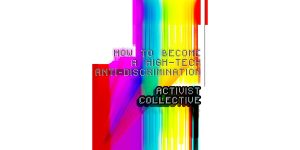
Nushin Isabelle Yazdani und Internet Teapot (Karla Zavala und Adriaan Odendaal): [d/r]econstructing AI - dreams of visionary fiction and zine-making
How to Become a High-Tech-Anti-Discrimination Activist Collective
With this workshop we investigate the structures behind algorithmic decision making systems, discuss why their design is normative, and how AI systems reinforce structural discrimination. We embark on a speculative journey and discuss how to design to create a more just world. Which artists inspire us? Which values are important to us? We want to collect our thoughts and creative outputs in a zine.
